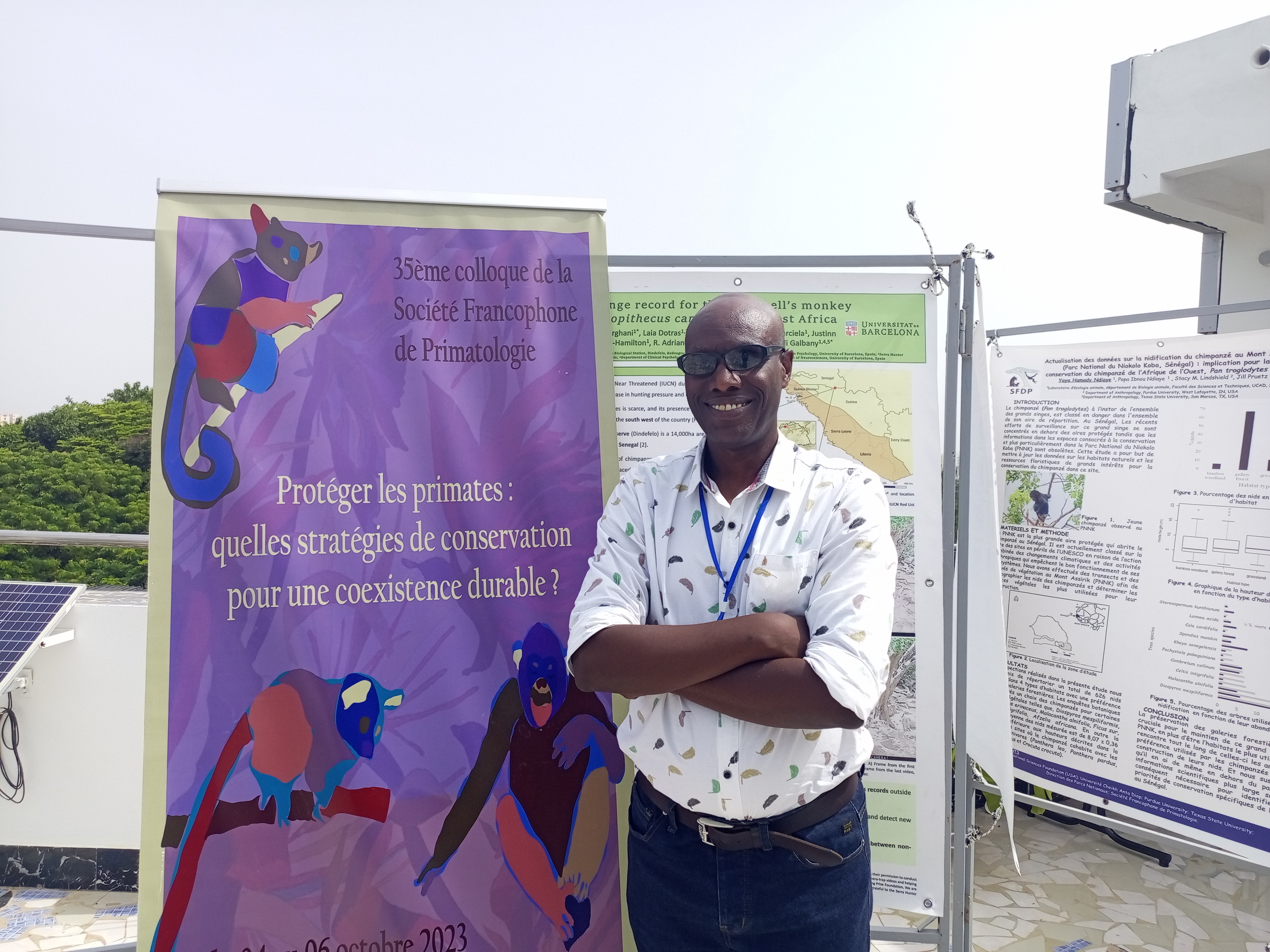
Interview with Léonidas Nzigiyimpa, founder of Conservation et Communauté de Changement (3C), Burundi
Published on 20 December 20231. Leonidas, you are the leader of a civil society organisation, Conservation et Communauté de Changement (3C), working on biodiversity conservation in Burundi. Can you tell us more about the environmental context in your country, as well as the main threats to biodiversity and what causes them in your view?
Burundi is a small country straddling Central and East Africa. It is known for its very high population density. More than 90% of the population depends on agriculture for its livelihood, resulting in heavy pressure on the country’s remaining natural forests, most of which are confined to protected areas. Several emblematic animal species are now extinct in Burundi, including elephants, giraffes, lions and rhinoceroses. The main threats to forest ecosystems are deforestation, agriculture, bush fires, infrastructure development, mining and invasive species.
In terms of biodiversity protection policy, Burundi currently has 15 protected areas covering 5.6% of the national territory. Most of these are highly threatened, due to human pressures. These include the Monge Nature Reserve, the Vyanda Nature Reserve, the Makamba Protected Landscape and the Gisagara Protected Landscape. There is an urgent need to save them from extinction.
2.Faced with this situation, you decided to create 3C in 2019. What was your initial, deep-seated motivation for creating this organisation? What battles are you fighting?
Faced with this bitter reality, I decided to create an organisation dedicated to the cause of nature conservation and biodiversity, working hand in hand with local communities. Based on my humble experience, I realised that involving local communities is the surest way to preserve biodiversity in the long term. In the Burundi context, there is no way out. In setting up my organisation “Conservation and Community of Change – 3C”, I wanted to implement my vision more freely, while taking care to surround myself with a young team to help me achieve it.
There are many battles to be fought and challenges to be overcome: it’s difficult to talk about nature conservation to poor communities without enough land and resources to cover the minimum of their vital needs; it’s very complicated to protect biodiversity with limited financial means; the rate of biodiversity loss favoured by Burundi’s geographical configuration (mountains and hills) is so high that I fear the worst in the very near future; finally, the field of nature conservation is cruelly lacking in locally available technical expertise.
3.After so many years in the field, I imagine that you have already learned a number of lessons about the work of environmental civil society. What do you think are the main factors of failure and success in the field when it comes to conserving biodiversity? Do you have any advice for an organisation just starting out?
Without wishing to criticise anyone, because that would be wrong of me, I have the impression that many civil society organisations working in the environmental sector lack vision. Many behave like service providers, like jacks-of-all-trades, without really knowing what they specialise in. In my opinion, it is important to have a vision, to focus on implementing that vision and to find the necessary means to do so.
The main factors of failure in the field when it comes to biodiversity conservation are the gulf between decision-makers and technical services on the one hand and local communities on the other. My many years in the field have given me the opportunity to discover in the local communities great knowledge holders who have lived and grown up with biodiversity. They have taught me many things and I continue to learn from them. If you work with these great masters of knowledge, you are sure to succeed in the challenge of conserving biodiversity.
What advice would you give to an organisation just starting out? Firstly, have a clearly defined vision of what you want to achieve and focus on that vision. Secondly, surround yourself with an implementation team who share the same vision, or who understand it and are committed to implementing it. Not a team ready to wage war when the slightest funding is secured. Thirdly, learn from others about what has worked and what has not. Fourth, be accountable to your partners.
4.2024 is just around the corner : what are your plans for the new year? Are there any upcoming actions that you’re particularly excited about, and if so, why?
Absolutely, there are actions to be implemented that are burning in my mind for 2024 :
-Continue efforts to ensure the physical integrity of the 14,000 ha that constitute the last chimpanzee habitats in southern Burundi;
-Succeed in the initiative to create the Mont Ganza community forest (815 ha) with local communities in southern Burundi. A first in Burundi’s history;
-Plant and grow 500,000 trees by and for local communities around protected areas in southern Burundi;
-Plant 20,000 fruit trees by and for local communities.
-Ecological monitoring and habituation of chimpanzees in Kibira National Park to promote niche ecotourism based on this species.
The implementation of all these actions is all the more important as they respond to the real resilience needs of local communities.